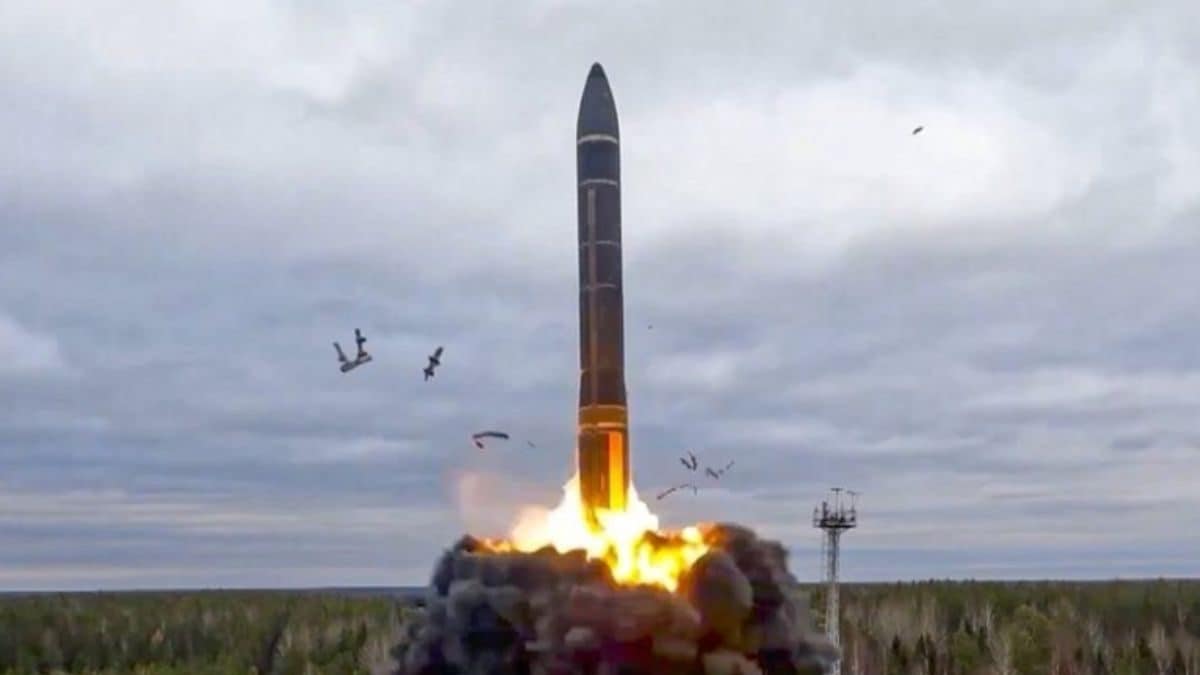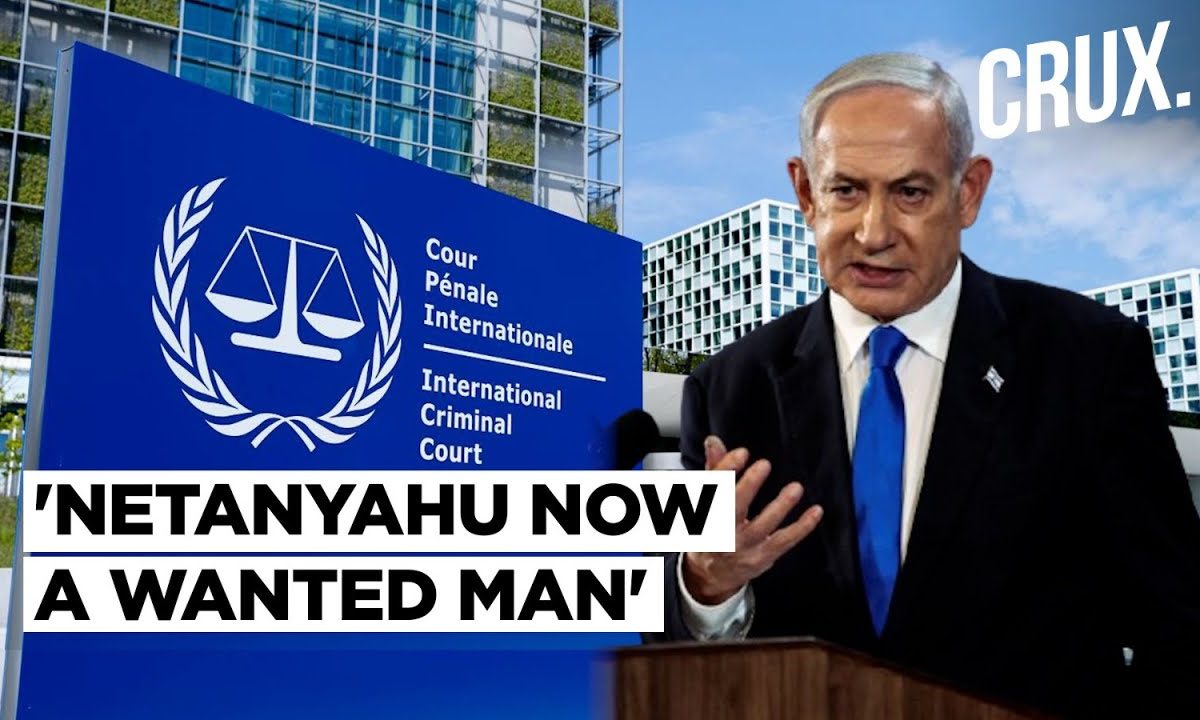Videos of Israel's Iron Dome shooting down rockets fired by Hezbollah and lighting up the night sky went viral. Though the Iron Dome is well known, there are some frequently asked questions (FAQs) like what is its success rate, how much does it cost to shoot down a missile, and how it feels on the ground? Here are answers to some of the FAQs.

Israel's Iron Dome anti-missile system in action as rockets are launched by Hezbollah from Lebanon on September 23. (Image: Reuters)
Sirens could be heard in Haifa and nearby areas in northern Israel on September 23 as Hezbollah fired multiple rockets into Israeli airspace. Videos of those rockets being shot down by the Israeli Defence Force (IDF) went viral on social media. Though they seemed like fireworks in the night sky, it was a matter of life and death. One miss by the Israeli anti-missile system Iron Dome and there could be dozens of deaths.
The rockets were fired by Hezbollah in retaliation for the IDF's bombing of terror-group the terror group's hideouts in Lebanon. Israel's offensive has killed over 550 people in Lebanon.
The Iron Dome intercepted a majority of the rockets fired by Hezbollah, and it was videos of those that went viral. In the last 11 months, Hezbollah has fired over 8,000 rockets into Israel.
IRON DOME IS PART OF ISRAEL'S MULTI-LAYERED SYSTEM
The Iron Dome is a part of the multi-layered air defence system of Israel, and it is coordinated by central control nodes and consists of three main components, Yehoshua Kalisky from the Institute for Security Studies told Reuters.
The outer layers include the Arrow-2 and Arrow-3 systems, designed to intercept ballistic missiles from thousands of kilometres away, with Arrow-2 targeting threats in the atmosphere and Arrow-3 capable of engaging them in space. Both aim to prevent debris from damage.
David's Sling serves as the middle layer, designed to counter shorter-range ballistic missiles from 100 to 200 km (62 to 124 miles), while also capable of intercepting aircraft, drones, and cruise missiles.
The innermost layer is the well-known Iron Dome. It is the final "ring of protection" and is the most widely used. The Iron Dome has shielded Israel from thousands of rockets and missiles fired by Hamas and Hezbollah. It also helped in fending off the hundreds of drones Iran used in its attack on Israel in April.
Here are answers to five frequently asked questions (FAQs) about Israel's Iron Dome.
1. WHAT IS THE IRON DOME AND HOW MANY MISSILES CAN IT FIRE?
Iron Dome or Kippat Barzel is part of Israel's air defence system and was made to intercept short-range weapons, and it works in all weather conditions. It has three parts -- A radar tracking station, a control centre, and a missile battery system.
The first is a radar that tracks incoming rockets and relays information on them to the control centre. At the control centre, it is analysed if the rockets are headed for inhabited areas. If the centre finds a rocket is headed for an unpopulated area, then it will not be intercepted, reports The BBC.
The Iron Dome's third part neutralises the incoming projectiles, and has up to three anti-missile batteries.
The Iron Dome has a detection and tracking radar developed by Elta, an Israeli defence company and subsidiary of Israel Aerospace Industries, in collaboration with the IDF. Its battle management and weapon control (BMC) centre is provided by mPrest Systems, an Israeli software firm for Rafael.
The missile firing unit launches the Tamir interceptor missile, which has electro-optic sensors and multiple steering fins for enhanced manoeuvrability.
Each Iron Dome battery comprises three to four launchers, with each launcher able to fire 20 missiles in 10 seconds.
This makes Iron Dome ideal for a scenario where too many missiles are fired at Israel, Rubin, a senior researcher at the Jerusalem Institute for Strategy and Security, told Reuters.
“Its radar and battle management systems are designed to handle a huge number of targets simultaneously,” Rubin said. “Each launcher can fire its full load of 20 interceptors within 10 seconds or so.”
2. WHEN WAS IRON DOME BUILT, AND WHEN WAS IT FIRST USED?
The Iron Dome was made after Israel's 2006 conflict with Hezbollah. Iran-backed Hezbollah had launched thousands of rockets into Israel, killing many and causing havoc.
Israel then decided it would need a new defence weapon. This led to the building of an Iron Dome, with the support of the US.
In July 2008, the Tamir interceptor missile underwent successful testing, leading to further tests in March 2009 where the missile defence system was verified, though no actual interceptions occurred.
Iron Dome first came into use in 2011. It fought a missile fired from Gaza by Palestinian terror group Hamas.
3. WHAT IS THE SUCCESS RATE OF IRON DOME?
Hamas members infiltrated Israel on October 7 and killed hundreds and took dozens hostage. The Palestinian-terror group attacked Israel with several thousand rockets, and the Iron Dome's reported interception rate was 90%.
The rockets which evaded the Iron Dome caused several deaths and injuries.
"The number of Israelis killed and wounded would be far higher if it had not been for the Iron Dome system, which has been a lifesaver as it always is," Israeli military spokesman Lt Col Jonathan Conricus told the BBC.
An all-out conflict can strain the supply of any defence system. Here, the Iron Domes can play a vital role.
“It’s a problem with any type of ammunition,” he said. “You have to prepare in advance. You have to prepare for that kind of attack.”
It has several layers of defence, and it is made specifically with Israel in mind.
“Israel I think has the most effective missile defence solution for the threats it faces as a country,” said Ankit Panda of the US-based Carnegie Endowment for Peace. “It’s been pretty well established that Iron Dome has a concept of operation that is incredibly effective.”
With a 90% interception success rate, the Iron Dome is a pretty solid defence system. It has to be kept in mind that swarms of projectiles are fired at Israel, and the Iron Dome tackles those.
4. WHAT DOES IT COST ISRAEL TO SHOOT DOWN MISSILES?
Several cheap and low-cost threats have to be dealt with and this means Iron Dome’s interceptors must also be of a reasonable price.
Each Tamir missile costs about $50,000. Generally, two missiles are shot at each incoming target.
This is low in comparison to the multimillion-dollar price of other missiles. To add to it, the price of not stopping the attacks also needs to be factored in, said Ankit Panda. “It’s not that Iron Dome is a 100% effective capability, but you have to consider the alternative,” of much more damage from enemy rockets, he said.
Though the Tamir missiles used in the Iron Dome are cheaper, intercepting thousands of incoming rockets adds up in times of war.
5. HOW MANY IRON DOME SYSTEMS DOES ISRAEL HAVE?
Iron Dome was initially built to give a city-size coverage against rockets with ranges of 4 to 70 kilometres, but the range has been expanded. A protective shield is created over Israeli towns and any threats can be spotted.
There are 10 Iron Dome batteries in Israel, each has three to four launchers, according to Raytheon and the Center for Strategic and Studies, reports CNN.
The Iron Dome system is easily transportable and needs just a few hours to set up.
6. DOES ISRAEL EXPORT THE IRON DOME SYSTEM?
Rafael stated it had delivered two Iron Dome batteries to the US in 2020. Ukraine also asked for Iron Dome to protect itself in its war with Russia.
The US has said it will reinforce Israel's anti-rocket defence by giving over two of the Iron Dome batteries that it operates in Israel.
A battery of Terminal High Altitude Area Defense (THAAD) missiles and batteries of Patriot missiles would also be provided.
7. HOW DOES IT FEEL ON THE GROUND?
Though videos have gone viral of Tamir missiles from Iron Dome systems shooting down Hezbollah rockets, but how does it feel to be on the ground when enemy projectiles are being intercepted?
The Iron Dome intercepts unguided rockets at low altitudes. So, those on the ground, can hear a loud bang of a direct interception and sometimes feel the impact, according to a CNN report.
Published By:
Priyanjali Narayan
Published On:
Sep 25, 2024

 1 month ago
1 month ago













